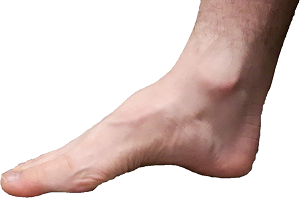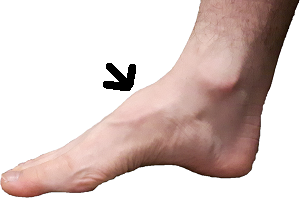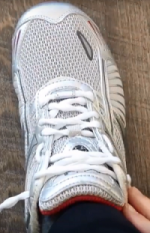
Pes Cavus (High Arch)
What is it?
Pes cavus (high arch) is when the arch on the inside of the foot is higher than what would be considered normal. This pes cavus (high arch) may be flexible, leading to a lower arch while standing, or it may be rigid, maintaining the high arch while standing. A flexible pes cavus (high arch) may lead to pain from strain, while a rigid high arch may lead to pain from a lack of shock absorption.
What will I see and feel?
A high arch will be visible on the inside of the foot, as there will be lots of space under the inside arch. It may or may not be accompanied with heel supination, which is the back of the heel turning out. When this heel turns out, the wear pattern could be visible on the bottom of the shoes. Normal wear patterns on the heel is to wear down slightly on the outside. If this becomes excessive, that is considered supination (heels turned outwards).
Common pain areas for those with high arches are at the heel, forefoot (ball of the foot), and the top of the foot.

A high arch may lead to a bump on the top of the foot, called a dorsal exostosis. This may rub on certain shoes when the instep of the shoe is lower, or the laces fall directly across the bone.
Causes
Genetics
Pes cavus (high arch) is commonly related to genetics. If you have high arches, it is very likely that someone on either side of the family have the same feet. It is more common to have a genetic high arch versus acquired.
Acquired
It is more common to have an acquired flat foot versus an acquired high arch. This is because as we age, muscles weaken and other structures wear down. To acquire a high arch, surgery or a specific condition can create this.
Charcot-Marie-Tooth Disease is a neurological condition that develops a high arch. This condition is hereditary and is slowly progressing, which creates muscle weakness and loss of sensation. If a family member has been diagnosed for this disease, check with your doctor to determine if the disease was passed down.
Treatments
Orthotics
Custom orthotics support the arch to prevent and relieve pain that is associated with high arches. Pain may develop from a lack of shock absorption, overworked muscles, or worn out joints. Over the counter inserts are another way to support without the custom features. Over the counter inserts may be used to prevent pain or in children growing rapidly. When a pes cavus (high arch) is accompanied with supination, additional support may be necessary to prevent overcorrection.
Because our feet change over time, we typically recommend yearly checkups, and recasting after five years or after a major change that may affect the feet.
Lacing Techniques

When a dorsal exostosis (bump on the top of the foot) is present, painful pressure and rubbing can develop. One way to reduce pain from the shoe is to change the lacing technique. An effective technique is to omit the cross over lace on top of the prominence. Instead of using the eyelet (lace hole) on the opposite side, keep the lace on the same side to provide an opening for the prominence. To see a visual description of the technique, check out our YouTube channel for the video.
Shoes
Finding the right shoes for high arches is important for cushioning, fit, and to prevent overcorrection.
Because a pes cavus (high arch) tends to lack shock absorption, a cushioned shoe will absorb the shock and prevent pain. This cushioning is important at the midsole, which is the thick part on the outside of the shoe (commonly white in colour).
Those with high arches tend to have a high instep. To improve the fit of the shoes, find a shoe with a higher instep, or an adjustable closure (lace or Velcro) to prevent pressure on the top of the foot.
Another important feature to look for is a neutral shoe, especially in running shoes. This is especially important if supination is involved. Avoid stability running shoes, as they will overcorrect the feet, causing additional pain.
If you have additional questions, feel free to contact us!
You must be logged in to post a comment.

Comments (2)
Pingback: Foot Tips for a New Exercise Routine | On the Ball Orthotics, Barrie ON
Pingback: Lower Back Pain | On the Ball Orthotics, Barrie ON